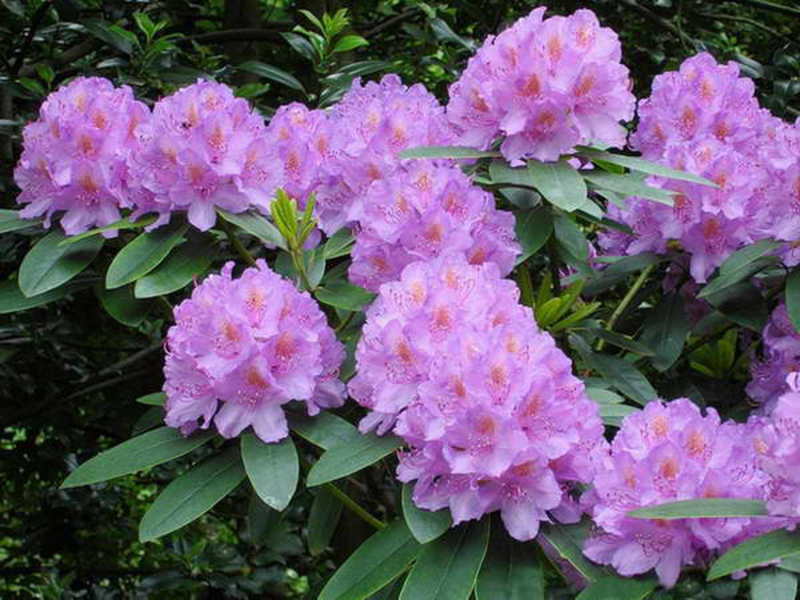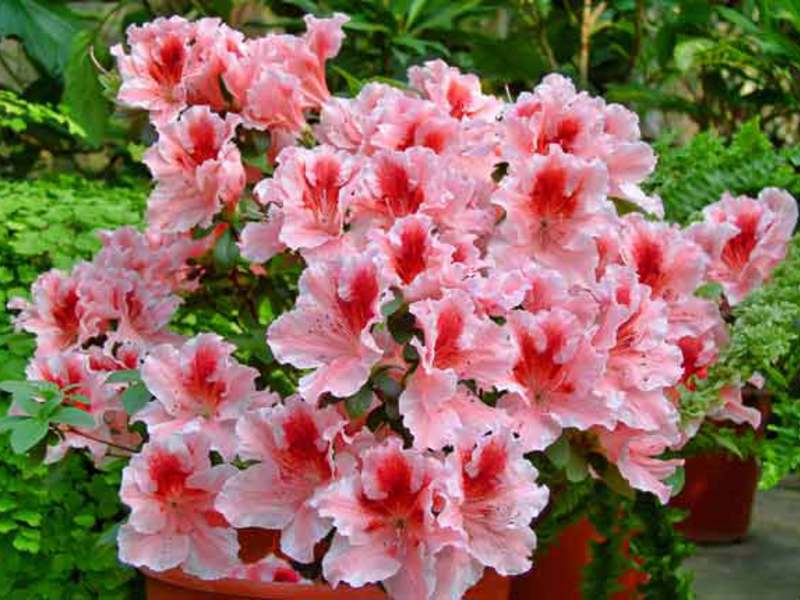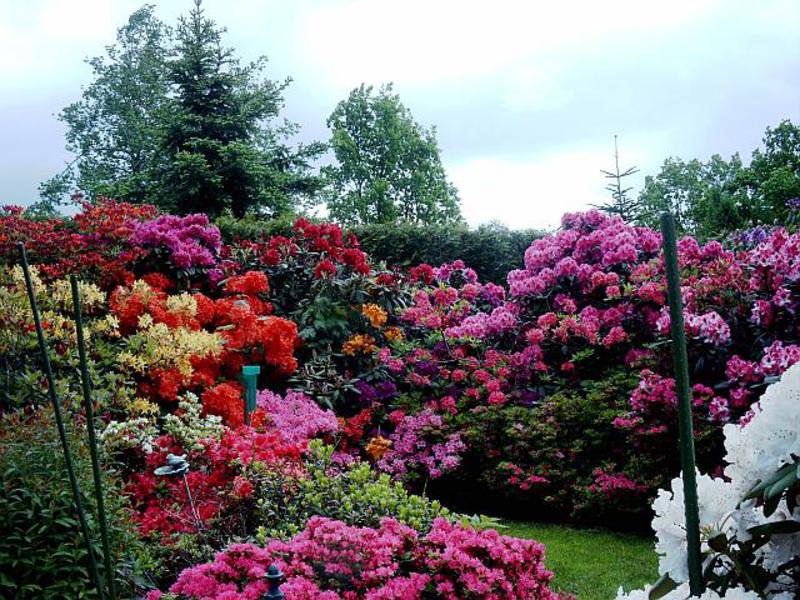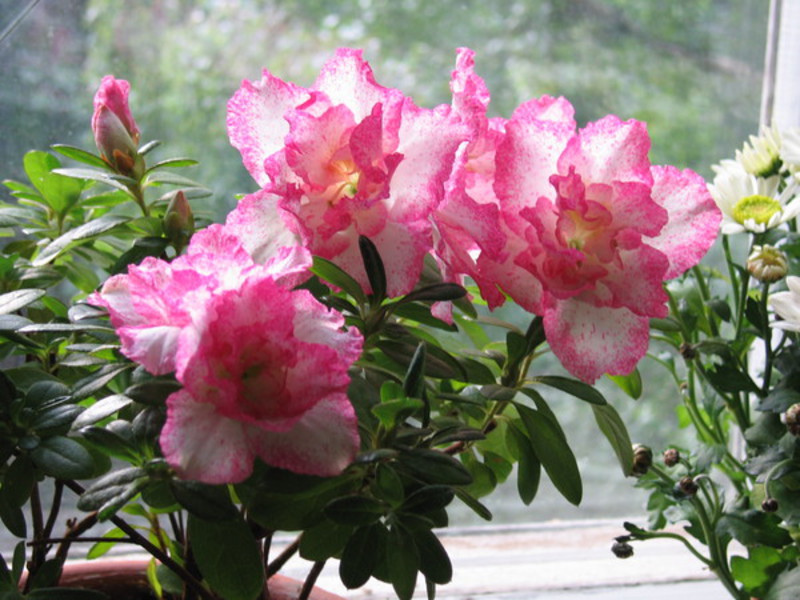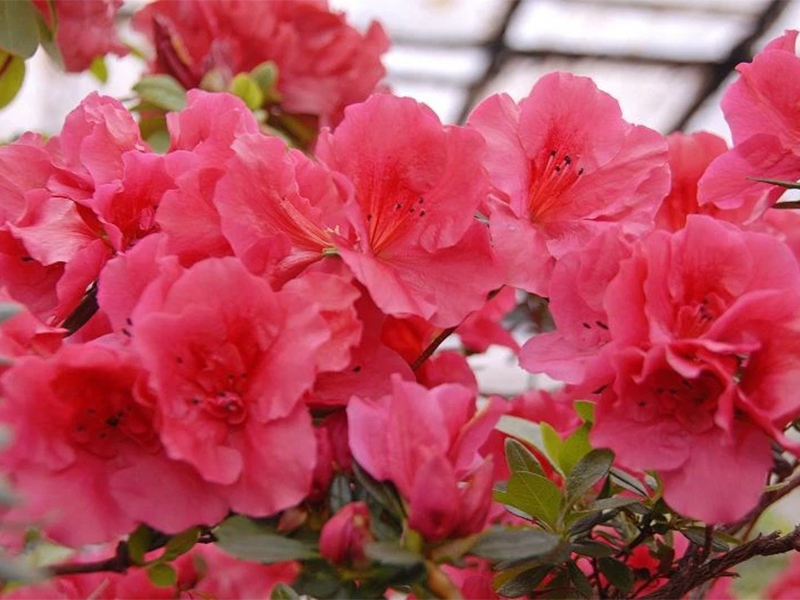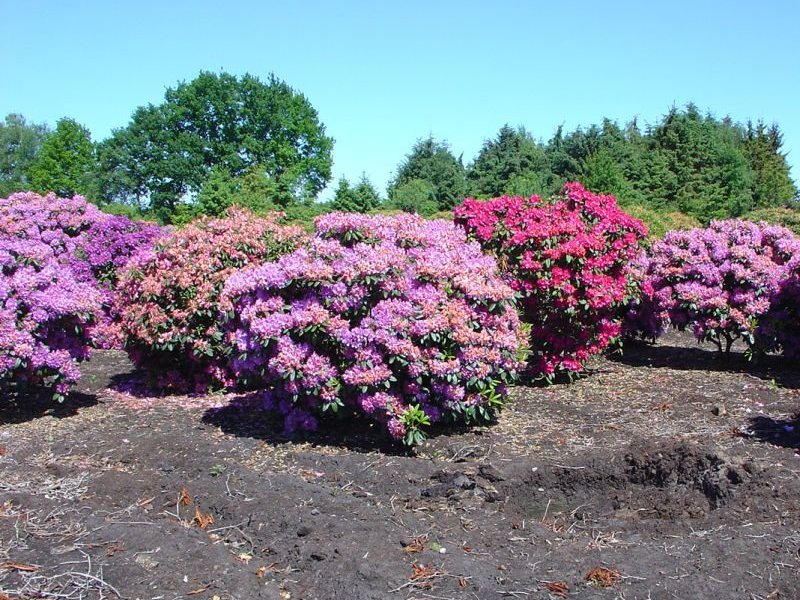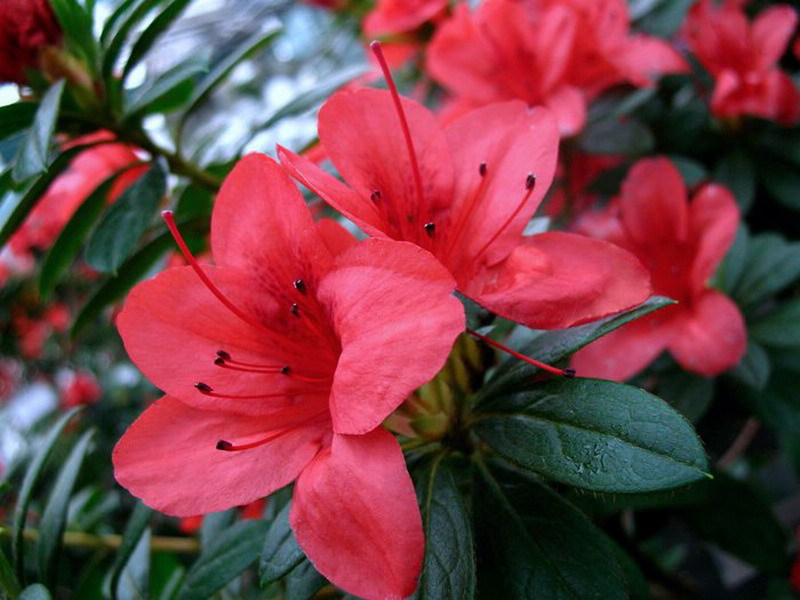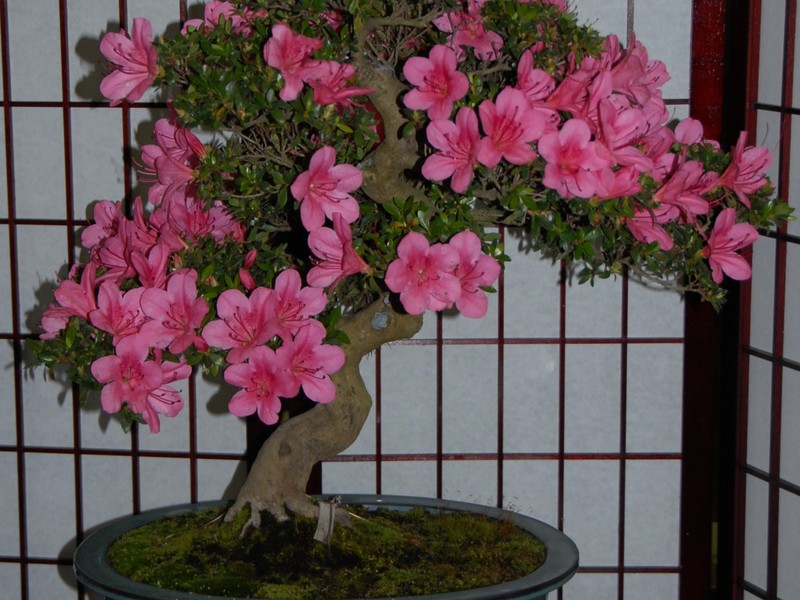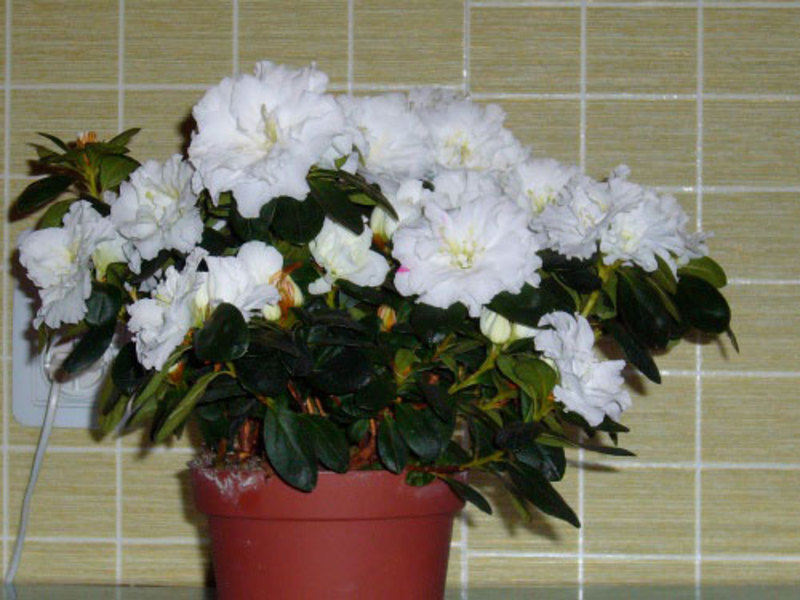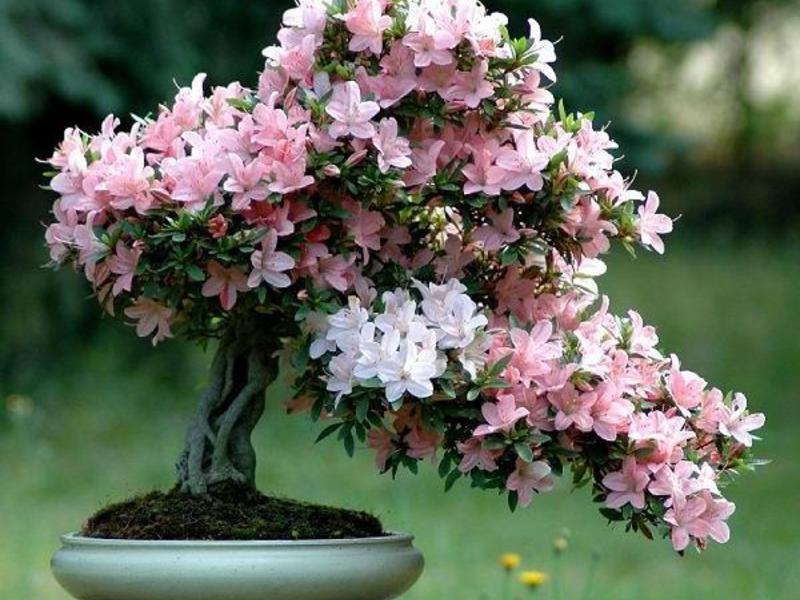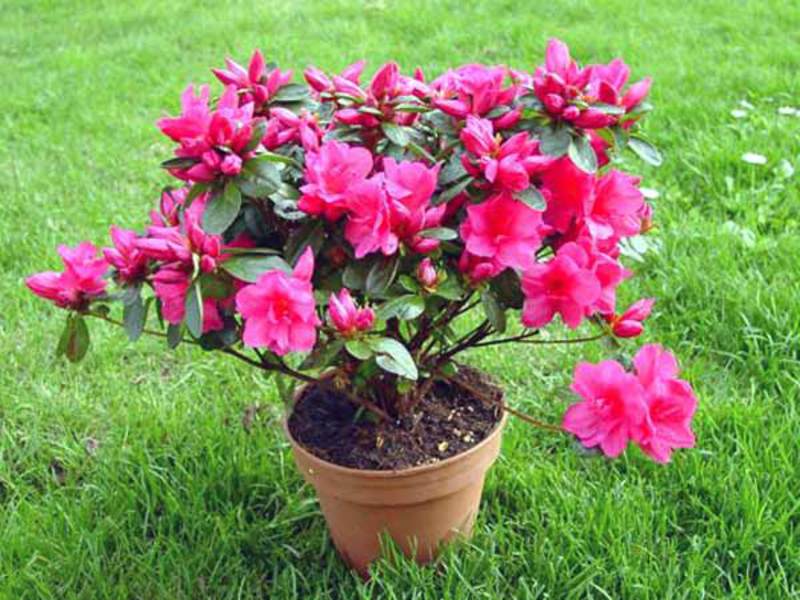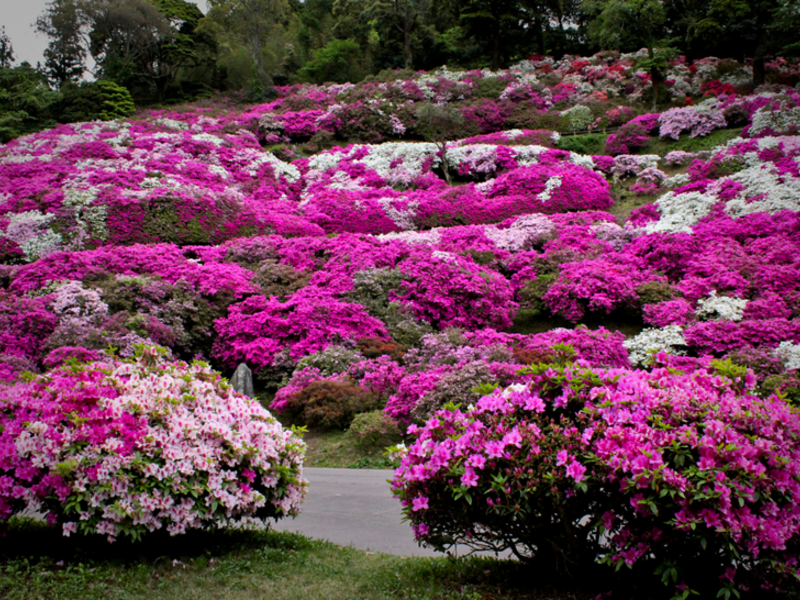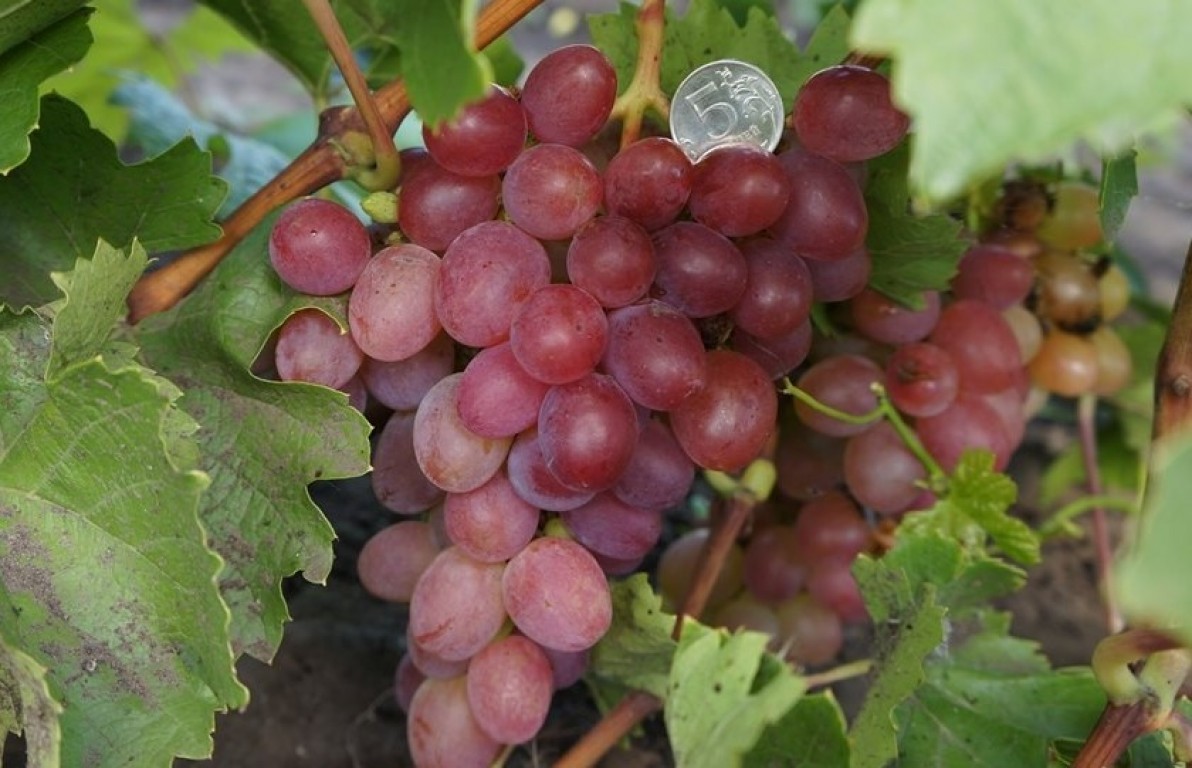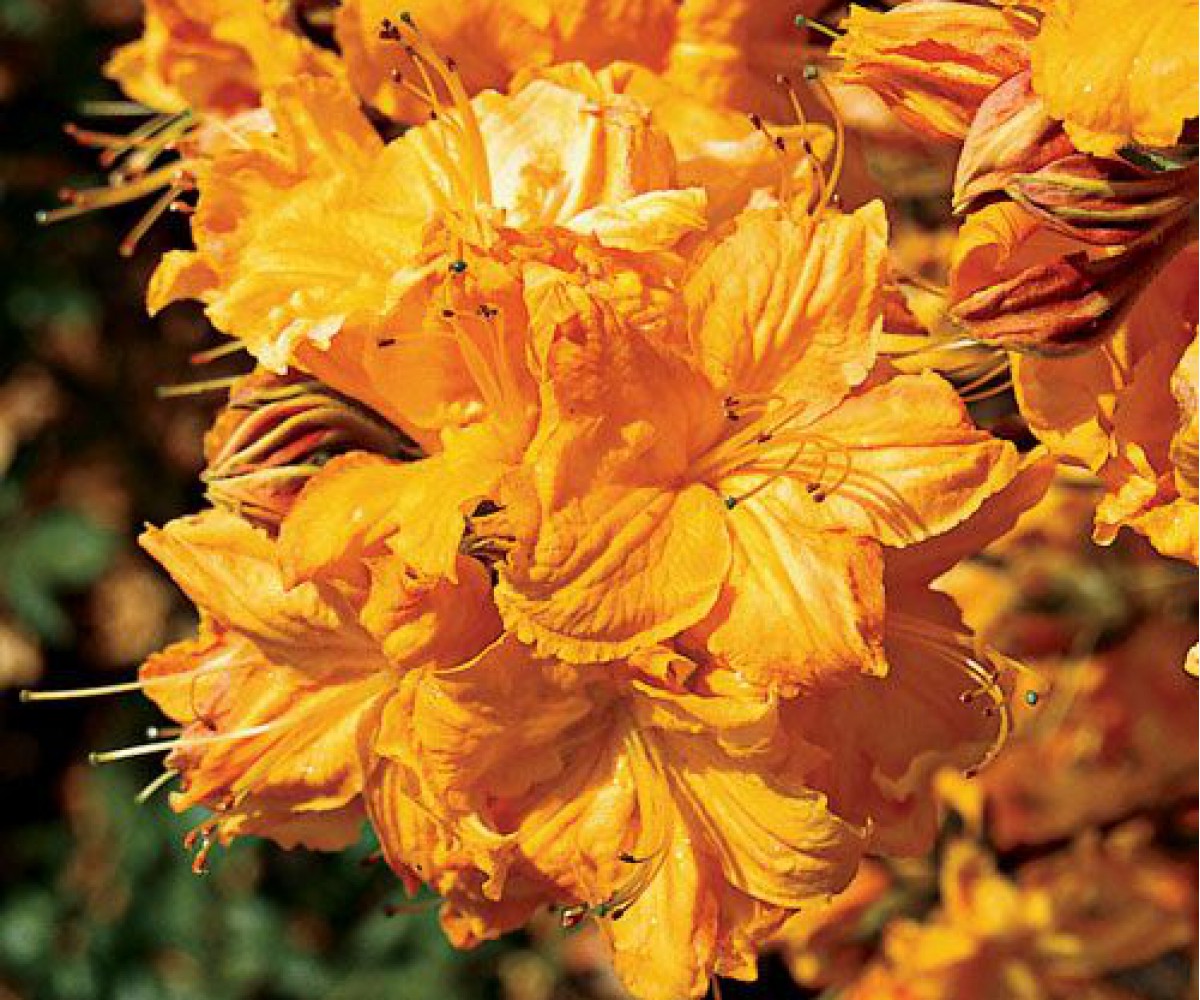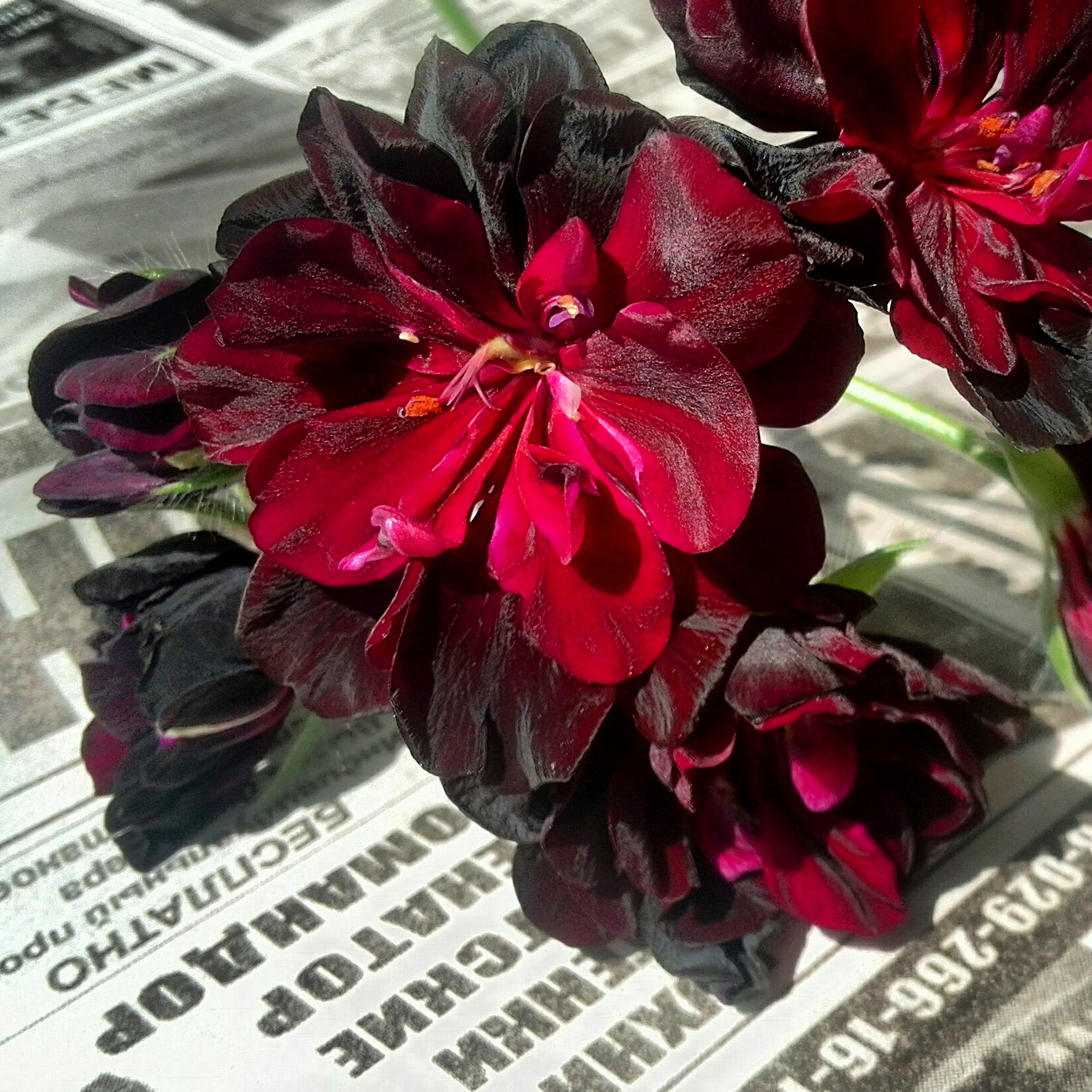Azalea is an ornamental shrub with beautiful large funnel-shaped flowers belonging to the large garden group Rhododendron. This shrub quickly gained great popularity among indoor flowering plant lovers due to its bright and lush cap, consisting of beautiful flowers during flowering.
And indoor azalea blooms in winter, when it snows outside the window, falling on the bare trunks of branches of other trees. Agree, watching a blooming bush on dull evenings will definitely cheer you up, and also wake up the spring notes in any person. A large selection of different varieties of indoor azalea Rhododendron allows you to choose a plant with fringed, double or corrugated flowers of any color.
Content
Azalea indoor: photo and description
If you decide to buy a room azalea for planting, then you need to organize competent flower care at home. Photos of various varieties of azaleas, which can be seen below, can help you choose the best option for interior design of the room. If you buy a bush in a store, then pay attention to the appearance of the leaves; they should not have any spots, damage or other defects. Look for a bush with lots of unblown flowers.
Do not repot the houseplant until it has faded. In our country, the following types of shrubs for growing at home are most popular, as japanese and indian azalea... When decorating interior design, plants such as azalea often coexist with:
- phalaenopsis orchid;
- pelargonium (for example, royal geranium);
- tuberous begonia.
With proper care, early varieties of this houseplant bloom in early winter. Mid-late species tend to bloom from February, and late ones from April. In Japan, azalea is a symbol of femininity, because this plant in this country is as iconic a present as in our country we have spathiphyllum "Women's happiness". In many photos, these flowers look like small bonsai trees. Miniature plants are actually quite popular for creating objects in a variety of bonsai styles.
Bonsai
 As a rule, flowers of the following varieties are selected to create bonsai: Rhododendron impediteum and indicum... It is quite interesting to form a crown in Japanese species of white satsuki, like kaho, aikoku, hakurei, wakaebisu, kinsai. The trees made in the Khan-kengai cascade style look quite stylish, in this case the rising top of the plant does not go above the ground level in the pot. These bonsai trees look quite original in combination with the crassula, common in our country - "Money trees".
As a rule, flowers of the following varieties are selected to create bonsai: Rhododendron impediteum and indicum... It is quite interesting to form a crown in Japanese species of white satsuki, like kaho, aikoku, hakurei, wakaebisu, kinsai. The trees made in the Khan-kengai cascade style look quite stylish, in this case the rising top of the plant does not go above the ground level in the pot. These bonsai trees look quite original in combination with the crassula, common in our country - "Money trees".
If you want to build a bonsai tree from a young azalea plant, then you need to actively cut off the shoots over several years, stimulating the cutting to increase the diameter of the main trunk. Then the crown is formed, for which rather thick and weak shoots are trimmed.
To create a lush crown, you need constantly pinch young shoots trees, leaving no more than 7 leaves on a branch. To give the tree the desired style, the direction of growth of the plant must be observed. In addition to the periodic pruning of shoots, a method of stretching with a rope and spacers is used, as well as twisting the branches with wire. But we must not forget that the wood of this tree is quite hard and at the same time very fragile. If you decide to arrange a composition of "mini-trees", we recommend that you pay attention to the following varieties of indoor flowers, like Dracaena Marginala and ficus Benjamin, they look harmoniously with bonsai azaleas Rhododendron.
Azalea care
Location and light
The best place to plant this plant is east-facing window sill or a floor stand near the window. This bush also feels comfortable near windows with north and west exposure, but the position on the southern window sills is undesirable. Place the flower away from direct sunlight, as they are harmful to it. In hot weather, it is desirable that the sutra and at noon the diffused light from the sun falls on the plant, and then it is necessary to organize partial shade. Take the bush outside in summer, but away from the hot sun rays.
Temperature
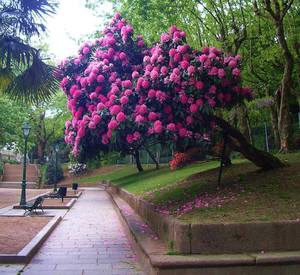 If you want to see your plant in bloom, a fairly strict temperature regime must be observed. In winter, the temperature of 17-19C is comfortable for azaleas, but for the formation of buds, inflorescences and buds need lower the temperature to 9-14C... A good option is to transfer the flower to the glazed balcony after the heating system is turned on. Some growers use an air conditioner to cool the air around the plant to create the desired flowering climate around the plant. In the summer, it is also necessary to keep the plant away from the heat. The best option is 19-22C.
If you want to see your plant in bloom, a fairly strict temperature regime must be observed. In winter, the temperature of 17-19C is comfortable for azaleas, but for the formation of buds, inflorescences and buds need lower the temperature to 9-14C... A good option is to transfer the flower to the glazed balcony after the heating system is turned on. Some growers use an air conditioner to cool the air around the plant to create the desired flowering climate around the plant. In the summer, it is also necessary to keep the plant away from the heat. The best option is 19-22C.
Air humidity
This plant loves high humidity (over 55%) throughout the year. This problem is often solved by installing an air humidifier. You can also spray the flower with cool water every day. But do not forget that azalea petals can become covered with dark spots after water ingress, therefore, to humidify the air during flowering, you can install a container with water near the flower to evaporate.
Watering
To do this, you need to use only settled and soft water. It is best to acidify waterby adding a few crystals of citric acid per liter. In the summertime, you can place the entire pot with the plant in a basin filled with water so that the roots absorb the required amount of liquid. It is necessary that the clod of earth where the azalea is located is constantly moist. If you are leaving for a certain time and there is no one to water, then put the pot with the plant on a large pallet with wet expanded clay.
Soil and fertilizer
The composition for planting azaleas must be selected acidic (pH 3.9-4.6). Some gardeners use heather soil for planting, but a ready-made mixture of Azalea soil is also suitable. A mixture is also made from pine earth, sand and moss (3: 1.5: 1.5). At the bottom of the pot, be sure to lay a layer of drainage from coarse and expanded clay sand.
Top dressing:
- in autumn and winter, during flowering, they are fed with superphosphate once every 2 weeks;
- in spring and summer we add groundbait every 7 days.
Transfer
The best container for an azalea is a low flower pot or flowerpot. The transplant is done for the first time after flowering. You need to transfer the bush to the pot rather carefully and at the same time with a lump of earth, since the roots of the plant are brittle and fragile. When transplanting, you need to prune - remove dried branches, shoots and flowers. Pour new soil evenly and carefully around the edges of the earthy ball.
Pruning
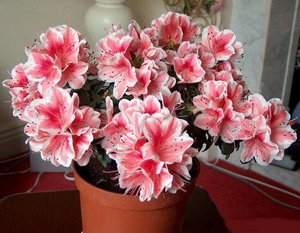 To create a beautiful crown of Rhododendron, you need to periodically pinch and trim branches.During pruning, weak and tightly spaced branches are completely removed, and one-year-old shoots are made shorter. Early pruning of azaleas is done in March and mid-late ones in July.
To create a beautiful crown of Rhododendron, you need to periodically pinch and trim branches.During pruning, weak and tightly spaced branches are completely removed, and one-year-old shoots are made shorter. Early pruning of azaleas is done in March and mid-late ones in July.
Pruning forms a beautiful flower crown with evenly spaced buds. Can make a flower crown in the form of a bush or in the form of a small tree.
If you need to make a bush out of azalea, then it is necessary to pinch the top of the side shoots, and the trunk - at a distance of 12 cm from the ground level. For even plant growth, you need to periodically unfold the flower pot in one direction.
The technology for creating a tree is different from the above option. You need to pick up the most beautiful and strong branch of the bush, and cut off the rest. We will create a trunk from this branch. You need to pinch the top when the trunk grows to the desired size. Then the top of the bush will branch out. To create a spherical tree crown, you need to periodically pinch the side shoots.
Bloom
When the temperature and high humidity required for the flowering of Rhododendron are fulfilled, the bush can delight you with bright flowers for several months. If the care of the plant occurs with violations of the rules, then the flowering time will be no more than a few weeks... After flowering, be sure to remove any dried flowers.
Reproduction
This flower can be propagated:
- dividing the bush;
- cuttings;
- by vaccination;
- seeds.
The seed propagation option is usually used by gardeners to consolidate the characteristics of the variety and further grow new species. Simple indoor flower lovers propagate this plant dividing the bush and using cuttings.
Division of the bush. An adult plant is carefully divided into several parts so as not to deform the surface roots. The separated bushes are planted in a container of the required size with a new mixture of earth.
Cuttings. Cut off the woody stalk 6-7 cm in size in spring. The cutting site must be impregnated with a root stimulator and the cutting must be planted in the ground (peat or pine soil) to a depth of 2 cm. The cutting must be covered with glass, which is periodically removed for watering. The cutting takes root in a month.
Diseases and pests of azaleas
Fusarium fungus
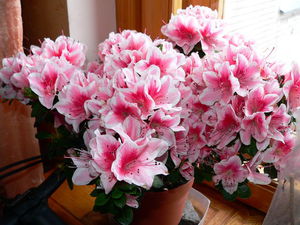 Signs: leaves dry out and lose their tone due to infection through new soil after planting or through plant injury.
Signs: leaves dry out and lose their tone due to infection through new soil after planting or through plant injury.
Treatment: first, it is necessary to pour with foundation, after a couple of days, treat it with an antibiotic solution and then with a light manganese solution.
Chlorosis
Signs: yellow spots form at the ends and edges of the leaves (usually chlorosis appears in the summer). Poisonous yellow spots may form between leaf veins.
Treatment: foliar baits with iron and magnesium sulfate.
Septoriasis
Signs: first, elongated brown spots form on some leaves. After the infected leaves dry up and fall off.
Treatment: process the flower with 1% Bordeaux solution every day for 14 days.
False shields and shields
Signs: Convex brown plaques form on the leaves and branches of the plant. Insects feed on the sap of the flower and the leaves dry up.
Treatment: First, wipe the azalea completely with a soft sponge and soapy water. Then we process the flower with 0.20% solution of actellik, actara or karbofos.
Scratch
Signs: on the branches, leaves and flowers of Rhododendron, small oval-shaped pests with flour bloom appear. The flowers are noticeably deformed and dry quickly.
Treatment: wash the flower with warm water, thoroughly wiping the leaves and branches with a soft sponge. After that, treat the flower with Actellik's solution.
Spider mite
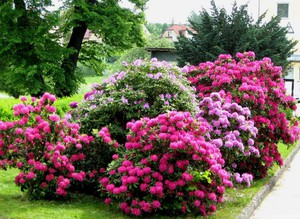 Signs: from the bottom of the leaf you can see clusters of small white or yellowish insects, as well as a small cobweb. The leaves of the plant curl up, turn yellow and dry out.
Signs: from the bottom of the leaf you can see clusters of small white or yellowish insects, as well as a small cobweb. The leaves of the plant curl up, turn yellow and dry out.
Treatment: first, you need to thoroughly wipe the Rhododendron with a cloth and soapy water, then rinse under warm water. If after a certain time you see insects again, treat the flower with a light solution of Actellik or Aktara.
Tarzanemus mite
Signs: It is quite difficult to see insects on a plant without a magnifying glass. The vital activity of insects manifests itself when the flowers brighten, the leaves fold, and flowering does not occur in a timely manner.
Treatment: wipe every day with a solution of wood ash (Making infusion: mix 250 grams of wood ash in several liters of settled water, let it brew for a day and strain with gauze).
With proper care and proper attention, you can enjoy the wonderful buds of delicate and beautiful flowers of the azalea Rhododendron with pleasure almost at any time of the year: both in summer and in winter - against the background of a patterned window from frost and bare trees on the street.

